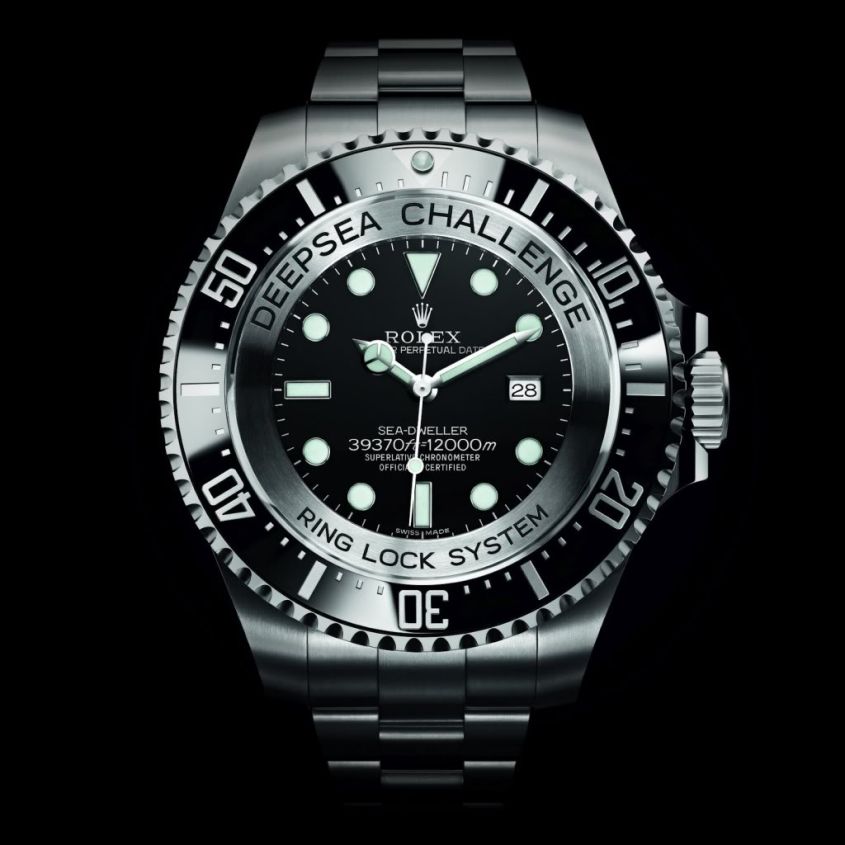A SHORT HISTORY OF ROLEX
Andrew McUtchenIn 1929, the headlines of the London Daily Mail didn’t just suggest, they shouted: “The Wonder Watch, that Defies the Elements”. Yes, each word was capitalised, and yes, it was all true. The Rolex Oyster, buckled firmly to the wrist of English swimmer Mercedes Gleitze had indeed lasted the 10-hour open water swim of the English Channel “without injury”. The full-page advertisement went on to describe the “Triumph in Watch-making” that was achieved when the Mercedes’ toes touched the chalk rocks of the UK with a watch that, “after careful examination”, still kept perfect time and was untouched by corrosion and condensation.
Since then, the venerable Swiss maison has made the sea its home, with feat after nautical feat spanning the decades. These include the first divers’ watch waterproof to 100 metres in 1953 (the Rolex Submariner, which adorns the wrist of this writer most days), the world’s deepest ever dive in 1960 and then, as recently as 2012, a journey that would make Jules Verne roll several times in his grave, to “the deepest place on earth”, the Mariana Trench.
And who was the first person ever to bump the bottom of that 11km deep ditch in a solo-manned vehicle? Oh, just multiple Academy Award (for Titanic) winner James Cameron. You might have heard of him. The Rolex Deepsea Challenge wristwatch that accompanied him was strapped to a robotic arm to prove a point; Rolex rolls in the deep. Just like before, when Mercedes’ final strokes across the channel brought her home, the watch emerged from the undersea voyage undamaged and another legend was born.


But somewhere along the way, in the early ‘90s, Rolex lifted its eyes from “the silent world” as another famous Rolex wearer, Jacques Coustea, described the deep sea, to the surface above. The watchmaker considered what might be possible on top of the water, as well as beneath. High winds, soaking spray and the percussive thump of a hull carving through rough seas was a beat that could no longer be ignored. Rolex decided to develop their first new model since the Daytona in 1964 and to begin sponsoring the world’s greatest yacht races; from the Maxi Yacht Rolex Cup along the coast of Sardinia to our very own: the Rolex Sydney Hobart Yacht Race. Before we move on, stop and consider that little detail: there was a full 28 years between new models. Few facts reinforce Rolex’s patience quite as well. Talk about keeping your powder dry….

In 1992, Rolex released the Yacht-Master, the first watch in the Professional Oyster collection to be available in three sizes – 29, 35 and 40mm. Where the Rolex Submariner and Sea-Dweller were considered ‘tool’ watches for underwater use, the Yacht-Master was a luxury variant for ‘topside’. Celebrity wearers at the time included Brad Pitt and Eric Clapton. Spectacularly twee photos of them are readily available with a quick Google. Like here. Recommended.
The Oyster Perpetual Yacht-Master II regatta chronograph that followed 15 years later was the first watch in the world equipped with a programmable countdown with a mechanical memory. This unique complication utilizes a rotatable ring command bezel developed in-house. It allows yachtsmen to cross the line as soon as possible after the starting gun; handy at a regatta when every second counts and utterly wearable at the celebration afterwards, with any attire, be it nautical or nice. The latest edition of the Yacht-Master II was launched at Baselworld last year. It’s in 904L steel, fitted with a Cerachrom bezel insert in popping blue ceramic. In 2014, the Everose and Steel model was added to the armoury.

We all know now that Rolex defies the elements, be it “moisture, water, heat, vibration, cold or dust.” But better still we know that Rolex Defies the Trends, in the silent world below, and the glamorous world above.
PRICING & AVAILABILITY
Pricing of the Yacht Master II on steel start at $20,000AUD. For more information contact Rolex.
ROLEX & YACHTING: IT WAS INEVITABLE
Rolex has always enjoyed breaking new ground, on water, but it wasn’t until the early ‘90s that the revered Swiss watchmaker began its association with yachting. They now sponsor several of the top offshore yacht races in the world, including the Sydney Hobart Yacht Race.
ROLEX SYDNEY HOBART YACHT RACE
Organised by the Cruising Yacht Club of Australia, the Rolex Sydney Hobart Race has become one of the top three offshore yacht races in the world. It begins at 1pm on the 26th of December when over 100 sailboats cross the starting line in Sydney Harbour. Over 400,000 enthusiasts gather to watch the yachts head north out of Sydney Harbour before turning right toward Hobart, Tasmania some 628 nautical miles away. The current record for the Rolex Sydney Hobart Yacht Race was set by Wild Oats XI in 2012 when it crossed the line in one day, 18 hours, 23 minutes and 12 seconds. Wild Oats XI also became the first boat to claim the treble – race record, line honours and overall winner – twice.
MAXI YACHT ROLEX CUP – A challenging race along the Sardinian coastline.
ROLEX SWAN CUP – An event for Swan Yachts held every two years in the glittering British Virgin Islands.
THE ROLEX FASTNET RACE – The Celtic Sea and its temperamental weather patterns make the trophy for the Rolex Fastnet Race a cherished piece of silverware. Held every two years.
ROLEX FARR® 40 WORLD CHAMPIONSHIP – For 96 hours, the Rolex Farr® 40 Worlds turns the Tasman Sea into a colourful sparring ground where yacht owners must skipper their own craft.
A version of this article appeared in Reef Magazine.





